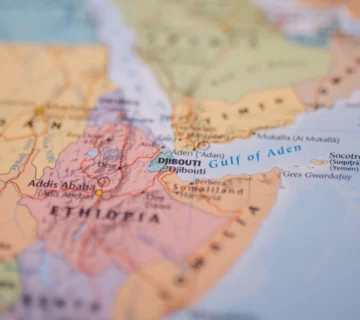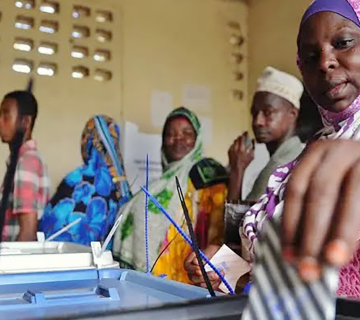Kenya will be withdrawing and retiring the current KES 1,000 note, and replacing it with a new one (demonetization), by October 1, 2019. The demonetization process began in May, 2019, and will be the first time Kenya is demonetizing on this unprecedented scale. This has been done in the hope of curbing corruption, stopping counterfeit bills from penetrating the system, and minimizing illicit financing in the state. Demonetization will rid Kenya of these problems if, institutions that push for transparency and accountability remain strong.
On June 1, 2019, during the Madaraka Day celebrations, President Uhuru Kenyatta announced the rolling out of Kenya’s new currency. Kenya is not the only country that is using demonetization to combat corruption and crime. India underwent a similar process in 2016 to combat corruption and crime, and modernize its cash-dependent economy. Other countries that have also retired existing currencies and replaced these with new ones have done so for different reasons. The United States of America demonetized (in 1873) to stabilize its currency, while Zimbabwe did so in 2015 to combat inflation. France, Italy, and Germany demonetized to facilitate trade with and/or join the European Union (a form of currency union) when the Euro was introduced.
The Constitution of Kenya 2010 is very clear that the currency (notes or coins) ‘shall not bear the portrait of any individual’, which has been the case since Kenya’s independence, as the currency bore portraits of first President Jomo Kenyatta. Almost a decade after the inauguration of the Constitution, this should have been something Kenyans expected to be done much earlier. Secondly, the announced change of notes was not the first act by the Central Bank of Kenya (CBK) to change the old currency. In 2018, newly minted coins were released to the public, which means that it should have been expected that other new currency will be rolled out. CBK has generally been mum on the issue. When the newly minted coins were released, no word on the new generation notes was ever officially communicated, nor were any plans or time lines for the change.
Even after the announcement by the President, some matters are unclear. It is clear that by October 1, 2019 the new generation notes will be the only legal tender for KES 1,000. Although there have been some improvements in public awareness campaigns this month, uncertainty remains with regards to whether or not all Kenyans – locally and abroad – understand fully that the ‘old’ KES 1,000 is not going to hold any value after September 30, 2019. Additionally, public awareness has not been carried on why the new generation currency is needed, and how to properly identify the new notes. This has resulted in a missing link between the people and the new currency, which was supposed to be an expression of Kenya’s culture. CBK has also put in place stringent measures, and regulations in the exchange process. For example, persons without bank accounts will not be permitted to exchange more than one million of old currency with the new notes. Furthermore, CBK has directed commercial banks to seek its express approval before allowing such a transaction. The currency exchange points have also been limited to either CBK’s head office or one of its six branches countrywide. Lastly, it is still not yet clear if or when other denominations of the old currency will be retired from Kenya’s monetary system, and what mechanisms CBK has put in place to with counterfeits, corruption, and illicit financing in Kenya. Some Kenyans have been appreciative of efforts to lock out ‘dirty money,’ but have expressed concerns over the seemingly secretive planning and stringent execution of the ongoing demonetization exercise.
History of currency in Kenya and the new generation currency
In order to understand whether this new generation currency will be able to facilitate the changes it promises, it is important to understand the history of currency in Kenya, how this new generation currency will be circulated into the economy to phase out the one before it. Secondly, there is a need to understand how matters of corruption, counterfeit currency, and illicit financing have emerged and if this has any effect on the means by which corruption, counterfeit currency, and illicit financing occurs in Kenya.
Currency is defined as the generally accepted form of money, and it is the government’s and CBK’s job to establish the legal tender in Kenya. Currency, as we know it, started along the coast under Arab influence, in 1832, using the silver coin Maria Theresa Thaler. In the 1860s, Silver Dollars from the newly independent USA would make its way to the Kenyan shores. With the rule of the British there came a change. The East African Currency Board (EACB), based in London, introduced an intermediate currency as they phased out all other currencies in East Africa. This currency the East African Currency (EAC), was used across the British East African Colonies (Tanganyika to Uganda). It was created to help transition from foreign currencies to shillings and cents. When Kenya got independence, the EAC shilling was replaced, by CBK. Under mandate given to them in Act Cap 491, CBK would start printing Kenyan shillings in denominations of five to 100 with a portrait of Jomo Kenyatta, the first president of Kenya. Since then, Kenya has experienced minor forms of demonetization. Cents, for instance, have lost value and are no longer circulating. By the start of 1985 until the 1990s, Kenyan notes of denominations five, 10 and 20 were no longer used and the 200, 500, and 1,000 notes were introduced.
Corruption and Illicit Financing in Kenya
Having established that CBK has placed strict measures on how and where transactions may occur in the country, it is important to establish whether the set standards are sufficient in dealing with the problems Kenya is facing.
According to the 2019 International Narcotics Control Strategy Report by the Bureau of International Narcotics and Law Enforcement Affairs, Kenya has been identified as one of the state’s most vulnerable to money laundering and financial fraud. Kenya’s position as the financial hub of East Africa and its place at the fore front of mobile banking has facilitated the growth of this problem. First, criminal operations such as illegal trade, transnational organized crimes and corruption are made possible by unregulated networks of hawaladars and other unlicensed remittance systems which facilitate unreported cash transfers the government is unable to track. With foreign nationals, including refugees primarily using the hawala system to transmit remittance internationally. The hawala system, according to this report is a-centuries-old broker system based on trust, it allows customers and brokers (called hawaladars) to transfer money or value without physically moving it, often in areas of the world where banks and other formal institutions have little or no presence. It is used by many different cultures, but under different names; “hawala” is often used as a catchall term for such systems in discussions of terrorism financing and related issues. Secondly, mobile banking and transactions are vulnerable despite the fact that it would be expected, with 165,900 mobile money agents use M-Pesa system, while 14 million accounts are on M-Shwari, a mobile lender, security would be a priority.
Before the demonetization, Kenya had attempted to deal with the issues mentioned above through the Proceeds of Crime and Anti-Money Laundering Act and banking regulations. However, the state has faced a challenge of achieving comprehensive, effective implementation of Anti Money Laundering laws and regulations.
Kenya’s demonetization effort to stop counterfeit currency, corruption, and illicit financing in the country, is unlikely to work in the current environment. First, ten days after the change was announced, a man in Moyale (North Kenya) was almost arrested for having counterfeit new generation notes, which he claimed he acquired from customers he took to Ethiopia. Such occurrences have made persons along the Kenya – Ethiopia border reluctant to deal with the new notes. Secondly, the limited locations countrywide may be geared towards ensuring that ‘dirty’ money is not filtered into the system, but this will have a negative impact on the economy. Taking into consideration that this system leaves persons who do not live in Nairobi, Mombasa, Kisumu, Eldoret, Meru or Nyeri in danger of losing money, both within Kenya and in the neighboring countries where the old currency is used.
Thirdly, the plan may have been futile from the beginning as there are cases in Kenyan courts protesting that the notes are not in accordance with the 2010 Kenyan Constitution. This is because they depict the faces of founding father Jomo Kenyatta and allegedly current Cabinet Secretary of Interior and Coordination of National Security in Kenya – Fred Matiang’i. If these cases succeed then the government’s efforts will have been for nothing. Fourthly, while the efforts by the government and CBK are geared towards stopping money laundering, the efforts seem to be short term oriented. The bank regulations and designated exchange points do not address loopholes in Kenya’s mobile money system, or the hawala system in place. As long as Anti Money Laundering laws continue to be unimplemented, the state will continue to be an attractive location for a black and grey market to exist.
Having established that already, counterfeits of the new notes are circulating in Kenya and the neighboring states; that the limited exchange points may lead to an economic downfall in Kenya; that the new notes are facing controversy over not being constitutional; and finally, that the set system cannot effectively deal with illicit financing and corruption in isolation, this demonetization effort is in danger of failing. Thus, it is important that the government of Kenya establishes and/or strengthens institutions that continue to uphold the values it is hoping to promote in the demonetization process.
Raudhat Sayeeda Saddam, Research Department, the HORN Institute.



